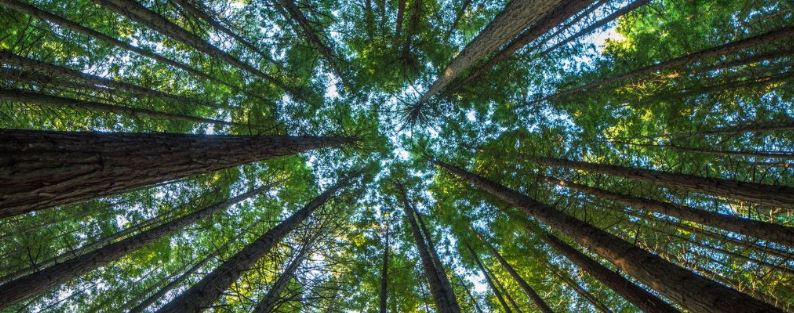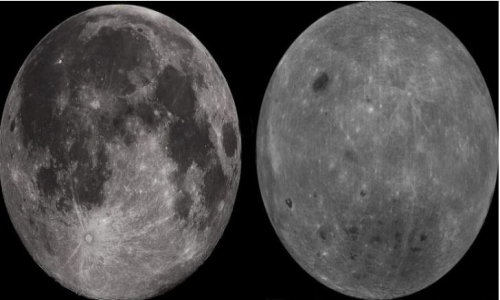


 10:26:3
10:26:3  2024-02-06
2024-02-06  1043
1043

The beautiful thing about fractals, the self-repeating patterns found throughout nature, is their enchanting repetition which runs infinitely deep.
Zoom in on the branching found in objects like fern fronds and snowflakes and you'll see they repeat in miniature – sometimes all the way down to atomic and quantum matter.
Mesmerizing as they are, such geometric patterns can have their limits. According to a new study that has found forest canopies don't replicate the fractal patterns of individual trees.
Given how common fractals appear to be in nature, University of Bristol biologists Fabian Fischer and Tommaso Jucker wanted to test the idea that fractal patterns might explain how forest canopies are organized.
They thought if fractal patterns extended from the small branches and leaves of a single tree to entire forest canopies, it could help ecologists describe complex landscapes using simple mathematical language.
"Scientifically, this self-similarity has the attractive property that it allows you to describe an apparently complex object using some very simple rules and numbers," explains Fischer.
If forest canopies behaved like fractals, then Fischer and Tommaso thought perhaps they could use this emergent property to quantify the complexity of forest ecosystems, allowing them to directly compare structural differences in the world's forests.
"Canopy structural complexity is a key emergent property of forest ecosystems that directly relates to their ability to store carbon, cycle water and nutrients, and provide habitat for biodiversity," the pair writes in their paper.
A few decades-old studies have pointed to evidence of fractal patterning, but only in patchy or fire-affected forests, so it remained unclear whether this reflected a genuine property of forested landscapes.
More recent analytical models have also tried to compute the structural complexity of forests, to understand what conditions give rise to more complex ecosystems.
To investigate, Fischer and Tommaso compiled data from airborne laser surveys of nine vastly different forest types in Australia, ranging from dry shrublands and tropical savannas to dense rainforests and towering mountain ash (Eucalyptus regnans) forests. The nine sites, each 5 square kilometers in size, varied substantially in rainfall and enormously in structure.
From each laser scan, the researchers built high-resolution models of the forest canopies to see how closely the sites followed fractal scaling.
Not closely at all, the analysis found: None of the nine canopy sections behaved like fractals beyond the crowns of individual trees.
However, there was some predictability in the traits of forests and how they deviated from fractal patterning, which might still be useful for ecosystem comparisons. Taller, wetter forests, for example, exhibited a higher degree of self-similarity than shorter, drier ecosystems.
"We found that forest canopies are not fractal, but they are very similar in how they deviate from fractality, irrespective of what ecosystem they are in," says Fischer.
"It was surprising," he added, "how similar all forest canopies were in the way they deviated from true fractals, and how deviations were linked to the size of the trees and how dry their environment was."
As a next step, the researchers want to compare a wider range of forest ecosystems across the globe, and look at multiple scans in time to see how forest structure develops.
While it might be nice to think we can explain away the complexity of nature with a few mathematical terms, forests may well prove to be unruly ecosystems that defy mathematical laws, from their canopies right down to their cells. And there's something beautiful in that too.
Reality Of Islam |
|

Astronomers

Cosmologist

Scientists
 9:3:43
9:3:43
 2018-11-05
2018-11-05
10 benefits of Marriage in Islam
 7:5:22
7:5:22
 2019-04-08
2019-04-08
benefits of reciting surat yunus, hud &
 9:45:7
9:45:7
 2018-12-24
2018-12-24
advantages & disadvantages of divorce
 11:35:12
11:35:12
 2018-06-10
2018-06-10
 6:0:51
6:0:51
 2018-10-16
2018-10-16
 6:0:8
6:0:8
 2023-03-19
2023-03-19
bahlool & the throne of haroun rashid
 8:20:35
8:20:35
 2018-06-21
2018-06-21
al-hussain (peace be upon him)
 10:18:1
10:18:1
 2022-09-21
2022-09-21
 1:38:41
1:38:41
 2021-12-08
2021-12-08
 5:57:34
5:57:34
 2023-03-18
2023-03-18
 9:50:37
9:50:37
 2023-02-28
2023-02-28
 2:13:43
2:13:43
 2022-05-27
2022-05-27
 5:41:46
5:41:46
 2023-03-18
2023-03-18
| LATEST |